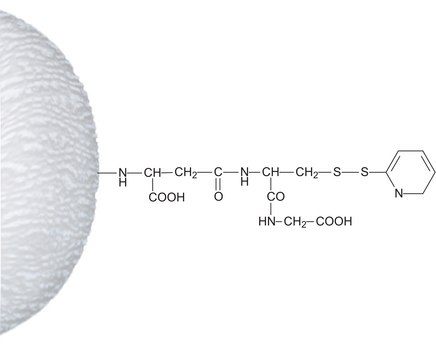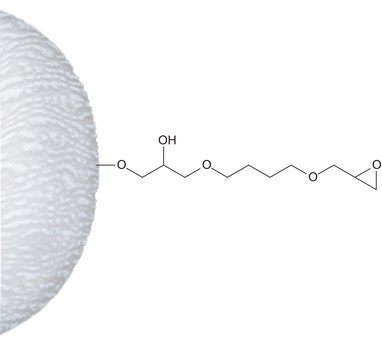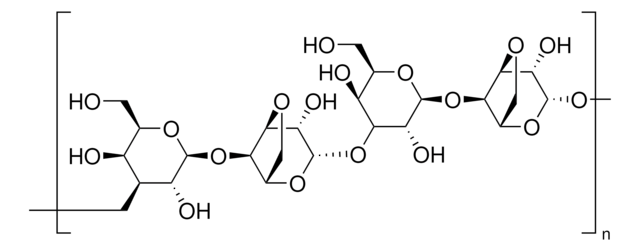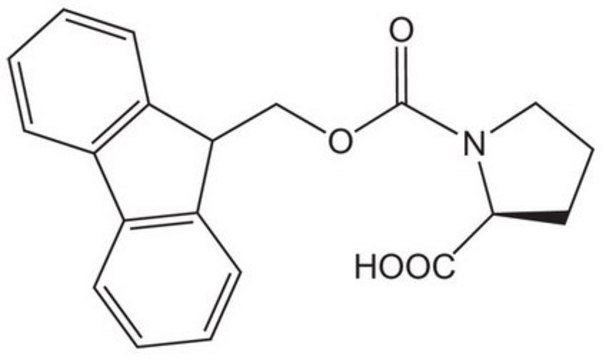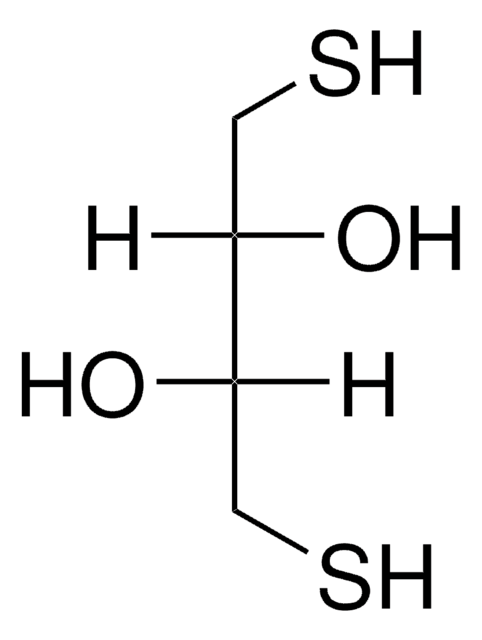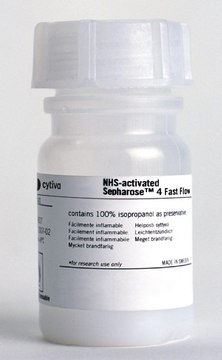T8387
Thiopropyl–Sepharose™ 6B
lyophilized powder
Synonym(s):
Thiopropyl−activated–Agarose
Sign Into View Organizational & Contract Pricing
All Photos(1)
About This Item
Recommended Products
form
lyophilized powder
extent of labeling
18-31 μmol per mL
matrix active group
hydroxypropyl 2-pyridyl disulfide
swelling
1 g swells to 4-5 mL gel
storage temp.
2-8°C
Looking for similar products? Visit Product Comparison Guide
Application
Thiopropyl Sepharose™ 6B is used in protein chromatography, affinity chromatography and hydrophobic interactions. Thiopropyl Sepharose™ 6B has been used for the removal of inhibitors from PCR extracts from evidence collected for law enforcement murder investigations. Thiopropyl Sepharose™ 6B has also been used to describe a method for the investigation of functional properties of distinct domains of viral thiol proteins, including the influenza virus membrane M1 protein.
Physical form
Lyophilized powder stabilized with lactose and dextran
Legal Information
Sepharose is a trademark of Cytiva
Storage Class Code
13 - Non Combustible Solids
WGK
WGK 3
Flash Point(F)
Not applicable
Flash Point(C)
Not applicable
Personal Protective Equipment
dust mask type N95 (US), Eyeshields, Gloves
Regulatory Information
新产品
Choose from one of the most recent versions:
Already Own This Product?
Find documentation for the products that you have recently purchased in the Document Library.
I Tabuchi et al.
FEBS letters, 508(3), 309-312 (2001-12-01)
In vitro virus is a molecular construct for in vitro protein evolution, which requires some mechanism to link phenotype to genotype. The first in vitro virus was realized by bonding a nascent protein with its coding mRNA via puromycin in
Covalent chromatography of influenza virus membrane M1 protein on activated thiopropyl Sepharose-6B.
N V Fedorova et al.
Journal of chromatography. B, Biomedical sciences and applications, 706(1), 83-89 (1998-04-17)
The M1 protein of influenza virus is a highly hydrophobic polypeptide that is resistant to enzyme cleavage during incubation in water solutions. We show here that the M1 protein that is immobilized on an insoluble activated support (thiopropyl Sepharose-6B) by
G Williamson et al.
Biochimica et biophysica acta, 706(2), 245-248 (1982-09-07)
The commercially available gel, 2-pyridyl disulphide hydroxypropyl ether-Sepharose (thiopropyl-Sepharose 6B), can be used to remove bound ligand completely from butyryl-CoA dehydrogenase (EC 1.399.2) in two simple operations. The resultant enzyme forms normal complexes with acetoacetyl-CoA and CoA persulphide, contains no
F Desarnaud et al.
Journal of chromatography, 603(1-2), 95-104 (1992-06-19)
The major problem usually encountered in the application of the (strept)avidin-biotin system to the purification of proteins (or other biological molecules) lies in the difficult reversion of the interaction between immobilized (strept)avidin and the adsorbed biotinylated protein. Among the proposed
Markandeswar Panda et al.
Journal of chromatography. A, 1202(1), 75-82 (2008-07-08)
Green fluorescent protein (GFP) fused to the C-terminal 100 amino acids of CAAT enhancer binding protein (C/EBP) also containing an N-terminal (His)(6) tag (GFP-C/EBP) was used as a transcription factor model to test whether thiol-disulfide exchange reactions could be used
Our team of scientists has experience in all areas of research including Life Science, Material Science, Chemical Synthesis, Chromatography, Analytical and many others.
Contact Technical Service